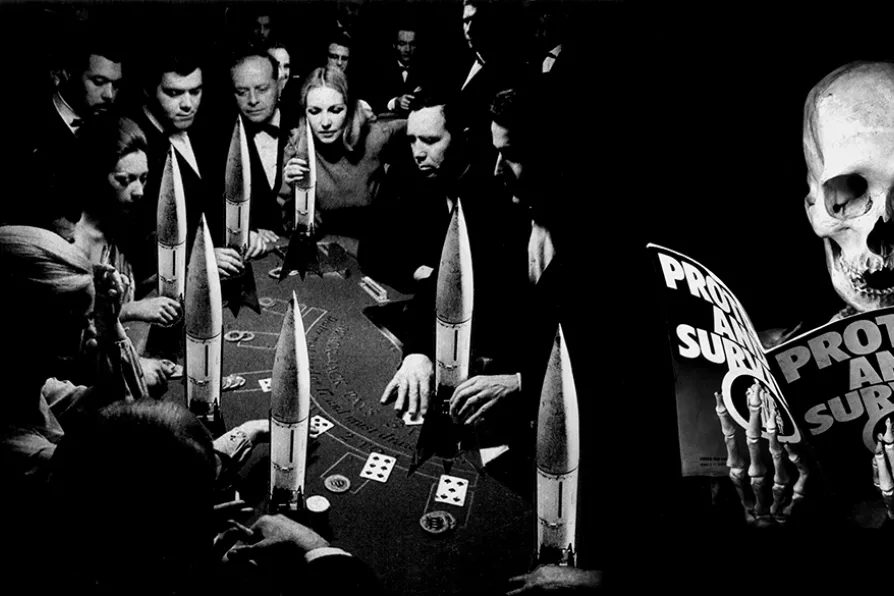MIK SABIERS savours the first headline solo show of the stalwart of Brighton’s indie-punk outfit Blood Red Shoes
Artist in residence of the human conscience
JAN WOOLF applauds art that has not only documented the anti-war and anti-capitalist movement but been an integral part of it

 Peter Kennard, (L) The Gamble, 1986; (R) Protest and Survive 1980
Peter Kennard, (L) The Gamble, 1986; (R) Protest and Survive 1980
Peter Kennard: Archive of Dissent
Whitechapel Gallery, London
SINCE the early 1970s, Peter Kennard’s art has not only documented the anti-war/ anti-capitalist movement but been an integral part of it; both as revelation and stimulus.
Indeed, he reveals their links and stimulates the processes of resistance. He may be the only artist whose art — and it is art, not propaganda — has appeared on the streets and aloft at demonstrations as well as in newspapers and galleries. You could consider him the artist in residence of the human conscience.
“My art,” he says, “erupts from outrage at the fact that the search for financial profit rules every nook and cranny of our society. Profit masks poverty, racism, war, climate catastrophe and on and on …”
Similar stories

MARJORIE MAYO recommends an exhibition that asserts Palestinian history, culture and creativity in the face of strategies to erase them

Co-curator TOM WHITE introduces a father-and-son exhibition of photography documenting the experience and political engagement of Chilean exiles

CHRISTINE LINDEY guides us through the vivid expressionism of a significant but apolitical group of pre WWI artists in Germany

HENRY BELL steps warily through the collection of a Glaswegian war profiteer to experience his collection of Degas’ remarkable images of working people









